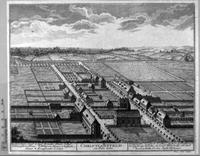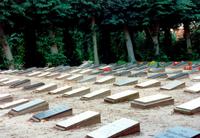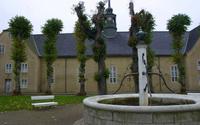You are in: Europe -> Denmark -> Christiansfeld, a Mo... , and traditional search or Image Gallery will yield results of this site only
Christiansfeld, a Moravian Church Settlement
| Site number: | 1468 |
|
| Type of site: | Cultural | |
| Date: | 18th century | |
| Date of Inscription: | 2015 | |
| Location: | Europe, Denmark, South Jutland | |
Up to 75 images are shown here. Click on each for more details or on Image Gallery for more images.
Six official UN languages:
English,
French
Other languages: Croatian, Danish, German, Interlingua, Italian, Norwegian-bokmål, Swedish
Other languages: Croatian, Danish, German, Interlingua, Italian, Norwegian-bokmål, Swedish
| Description: | Founded in 1773 in South Jutland, the site is an example of a planned settlement of the Moravian Church, a Lutheran free congregation centred in Herrnhut, Saxony. The town was planned to represent the Protestant urban ideal, constructed around a central Church square. The architecture is homogenous and unadorned, with one and two-storey buildings in yellow brick with red tile roofs. The democratic organization of the Moravian Church, with its pioneering egalitarian philosophy, is expressed in its humanistic town planning. The settlement’s plan opens onto agricultural land and includes important buildings for the common welfare such as large communal houses for the congregation’s widows and unmarried men and women. The buildings are still used by an influential community of the Moravian Church. --WHMNet's description is from WHC Site, where additional information is available. | |
| Christiansfeld, with a population of 2,855 (1 January 2014), is a town in Kolding Municipality in Southern Jutland in Region of Southern Denmark in Denmark. The town was founded in 1773 by the Moravian Church and named after the Danish king Christian VII. Most of Christiansfeld was constructed in the years 1773-1800, following a strict city plan. To encourage construction, king Christian VII promised a ten-year tax holiday for the city and paid 10% of the construction costs of new houses. It was one of many towns in Schleswig officially designated a small market town (flække). --Wikipedia. Text is available under the Creative Commons Attribution-ShareAlike License. | ||
| Source: | http://whc.unesco.org/en/list/1468 | |
| Source2: | Wikipedia (http://wikipedia.com) | |
| Reference: | 1. UNESCO World Heritage Center (http://whc.unesco.org/en/list/1468). 2. Wikipedia. | |









